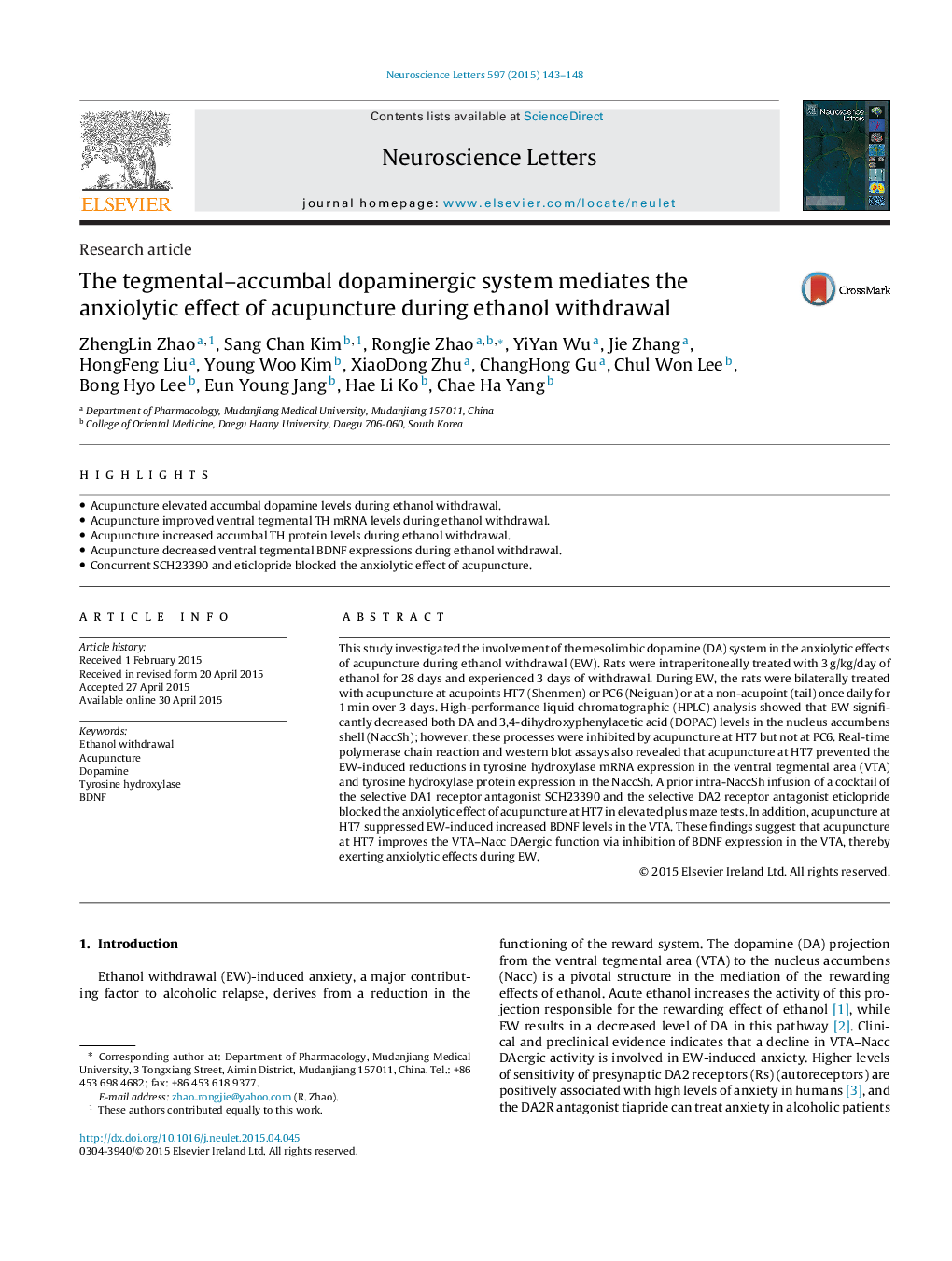| Article ID | Journal | Published Year | Pages | File Type |
|---|---|---|---|---|
| 6280726 | Neuroscience Letters | 2015 | 6 Pages |
Abstract
This study investigated the involvement of the mesolimbic dopamine (DA) system in the anxiolytic effects of acupuncture during ethanol withdrawal (EW). Rats were intraperitoneally treated with 3Â g/kg/day of ethanol for 28 days and experienced 3 days of withdrawal. During EW, the rats were bilaterally treated with acupuncture at acupoints HT7 (Shenmen) or PC6 (Neiguan) or at a non-acupoint (tail) once daily for 1Â min over 3 days. High-performance liquid chromatographic (HPLC) analysis showed that EW significantly decreased both DA and 3,4-dihydroxyphenylacetic acid (DOPAC) levels in the nucleus accumbens shell (NaccSh); however, these processes were inhibited by acupuncture at HT7 but not at PC6. Real-time polymerase chain reaction and western blot assays also revealed that acupuncture at HT7 prevented the EW-induced reductions in tyrosine hydroxylase mRNA expression in the ventral tegmental area (VTA) and tyrosine hydroxylase protein expression in the NaccSh. A prior intra-NaccSh infusion of a cocktail of the selective DA1 receptor antagonist SCH23390 and the selective DA2 receptor antagonist eticlopride blocked the anxiolytic effect of acupuncture at HT7 in elevated plus maze tests. In addition, acupuncture at HT7 suppressed EW-induced increased BDNF levels in the VTA. These findings suggest that acupuncture at HT7 improves the VTA-Nacc DAergic function via inhibition of BDNF expression in the VTA, thereby exerting anxiolytic effects during EW.
Related Topics
Life Sciences
Neuroscience
Neuroscience (General)
Authors
ZhengLin Zhao, Sang Chan Kim, RongJie Zhao, YiYan Wu, Jie Zhang, HongFeng Liu, Young Woo Kim, XiaoDong Zhu, ChangHong Gu, Chul Won Lee, Bong Hyo Lee, Eun Young Jang, Hae Li Ko, Chae Ha Yang,
